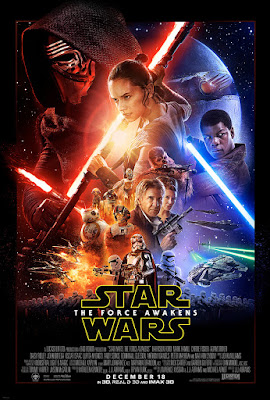There has been a lot of negative talk recently about the state of the film industry (and by recently I mean the past 15 years). From fanboys and film geeks to skinny jean hipsters and wise old Gen Xs, many, including myself, have lamented the lack of original content in cinemas. It feels like every movie released today is an adaptation, sequel, remake or reboot. “Remember the 80s?” we'd cry, “when film makers told original stories that would spawn franchises and potentially achieve cult status?”
 |
| For illustrative purposes only. |
What if we were to line up the movies of 1985 and 2015 side by side - would the statistics prove the mid-eighties to really be the halcyon days of cinema? Was 1985 truly the greatest year in film history, or are you looking at the past with nostalgia goggles?
 |
| An example of an excellent movie. And something else. |
In order to compare the films of 1985 and 2015, I needed to come up with an unbiased framework. For the sake of this experiment, I chose to only look at the films of six distributors (rather than trawling through every single movie released in every country of the world). Those distributors were:
- 20th Century Fox
- Paramount
- TriStar
- Columbia
- Warner Bros.
- Universal Pictures
Firstly, I ruled out box office gross
and popularity as methods of comparison. The money a film makes in
its opening weekend or theatrical release has little to do with how
'good' it is. Good films are not always the most popular. And whether
a film is deemed good or not is purely subjective.
As most advocates for the films of the 80s claim original content as the reason for their greatness, I
decided that originality would be my basis for comparison. I listed
every movie released during 1985 (106) and 2015 (99) and tallied the amount
that were:
- original stories
- sequels or franchises
- remakes or reboots
- adapted from an existing product (book, television series, theatrical play, etc)
- based on a true story
From this list, I determined the amount that
were the first filmed iteration - so no sequels, reboots, remakes or franchises. Adaptations and true stories
could be deemed 'original' if it was the first time they had made the
jump to the silver screen. What I found in the data was
surprising:
- With the exception of Columbia and TriStar, the other four companies distributed almost exactly the same amount of films in 2015 as they did in 1985 (with only two or three films difference).
- Adapting known brands was just as rampant in the 80s as it is today. Back in 1985, movie execs were adapting everything from magazine articles (Perfect) and boardgames (Clue) to greeting cards (Rainbow Brite and the Star Stealer) and children's television staples (Sesame Street Presents: Follow That Bird).
The final tally revealed:
- In 1985, the combined distribution of original content by the six companies was 88% of all films released.
- In 2015, the combined distribution of original content from those same companies was 48%. Which, for the mathematically challenged out there, is less than half.
Whether or not you believe films were better in the 80s will always be a matter of taste, but the fact is a lot more original movies were being released 30 years ago. So why are we seeing a resurgence of
80s pop culture? To quote Bono in his prime: "You glorify the past when the future dries up." Has 'the future' dried up? Are we truly out of new ideas? In 2015 alone, there were at least 10 films released by these six distributors based on popular media from the late 70s to early 90s:
- Mad Max: Fury Road (sequel/reboot)
- Terminator Genysis (franchise/reboot)
- Point Break (remake)
- Vacation (sequel/reboot)
- Alvin and the Chipmunks: The Road Chip (sequel?)
- Snoopy and Charlie Brown: The Peanuts Movie (franchise?)
- Poltergeist (remake)
- Jem and the Holograms (based on the cartoon from 1985)
- Straight Outta Compton (N.W.A 1988-1991)
- Pixels (the cinematic equivalent of waving artefacts from your youth in your face and shouting "remember this?")
Before you get too depressed about the state of contemporary culture, keep this in mind - Bono's quote was actually written in 1988, referring to the 80s fascination with pop culture from the 60s.
Every generation looks to the past for inspiration. My theory for the current 80s resurgence is pretty simple: The people in charge grew up in the 80s. Like me, they were age appropriate for the awesome films that came out during that period. These films left indelible impressions on them, and it's that type of feeling that they want to replicate in a new audience.
 |
| Mostly shot in retro black and white, even though colour film stock was readily available in 1987. |
Every generation looks to the past for inspiration. My theory for the current 80s resurgence is pretty simple: The people in charge grew up in the 80s. Like me, they were age appropriate for the awesome films that came out during that period. These films left indelible impressions on them, and it's that type of feeling that they want to replicate in a new audience.
Or they're just capitalising on the nostalgia of a generation too
old to illegally download everything. You decide...



No comments:
Post a Comment